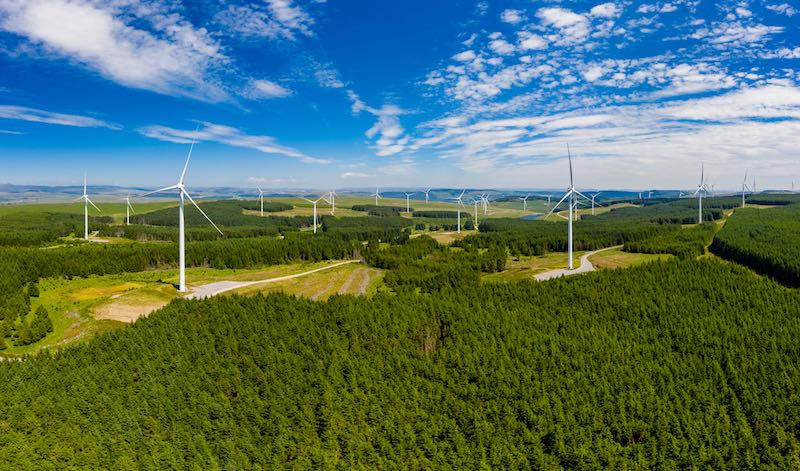UK Onshore Wind Installations Drop, Jeopardising Climate Goals

Unfavourable government policy has squashed the installation of new onshore wind capacity, threatening the UK’s decarbonisation goals, RenewableUK has warned.
The trade body found that just 23 new onshore wind farms were brought online in 2019, adding 629MW of generating capacity. That’s a fraction of the 2,683MW of capacity installed in 2017, when installation peaked.
Fewer new wind farms were installed in 2019 than at any time in the last decade, when an average of 208 were coming online each year.
RenewableUK attributed the sharp decline to government policy, which in 2016 closed subsidies, including the Renewable Obligation, feed-in tariff and Contract for Difference schemes, to onshore wind developers. The change in policy, which RenewableUK has previously described as an “effective ban,” led to a “huge drop” in onshore installations in 2018, which has continued into 2019.
Moreover, all but one of 2019’s new wind farms had secured support from the government before onshore wind was excluded from subsidies. As the pipeline of projects approved before the closure of the schemes runs dry, installations will fall still further, RenewableUK has cautioned.
Just two onshore wind projects, with a collective three turbines providing 1.9MW of capacity, received planning permission in England in 2019 and just one new project, with a capacity of 5MW, was submitted to the English planning system last year.
In contrast, in Scotland, where the government supports the development of new onshore wind projects, there’s a “healthy pipeline of new projects,” with 55GMW across 26 projects given planning consent last year and a further 1,969MW across 35 projects submitted into the planning system.
The government’s opposition to onshore wind, enshrined in previous Conservative party manifestos, is limiting development of renewable energy, especially in England, and jeopardising the UK’s legally-binding decarbonisation targets, RenewableUK warned.
Rebecca Williams, head of policy and regulation at RenewableUK, said: “These figures highlight that the current approach is falling short on delivering renewable energy capacity at the level needed for net zero. This is a flashing red warning light on our net zero dashboard and we urgently need a new strategy from Government.
“Onshore wind is one of the cheapest low carbon technologies in the UK, quick to build, and it’s hugely popular as the Government’s own opinion polls show 78% of people support it. As Ministers get down to work at the start of a new decade, we need to see new policies which support the full range of clean power sources to transform our energy system.”
The Committee on Climate Change (CCC), the government’s official climate advisor, has advised that the UK’s onshore wind capacity must increase from 13GW to 35GW by 2035, in order for the UK to meet its net zero goal by 2050.
Ramping up onshore wind installations would also cut 7% from energy bills, saving households £50 a year on average, the CCC found.
Read on our blog

With the government poised to implement tough new measures to...

Budget broadband provider TalkTalk has been notifying customers via email...

A year-long investigation by charity Citizens Advice has revealed a...

Education Secretary Nadhim Zahawi has announced a new commitment to...
